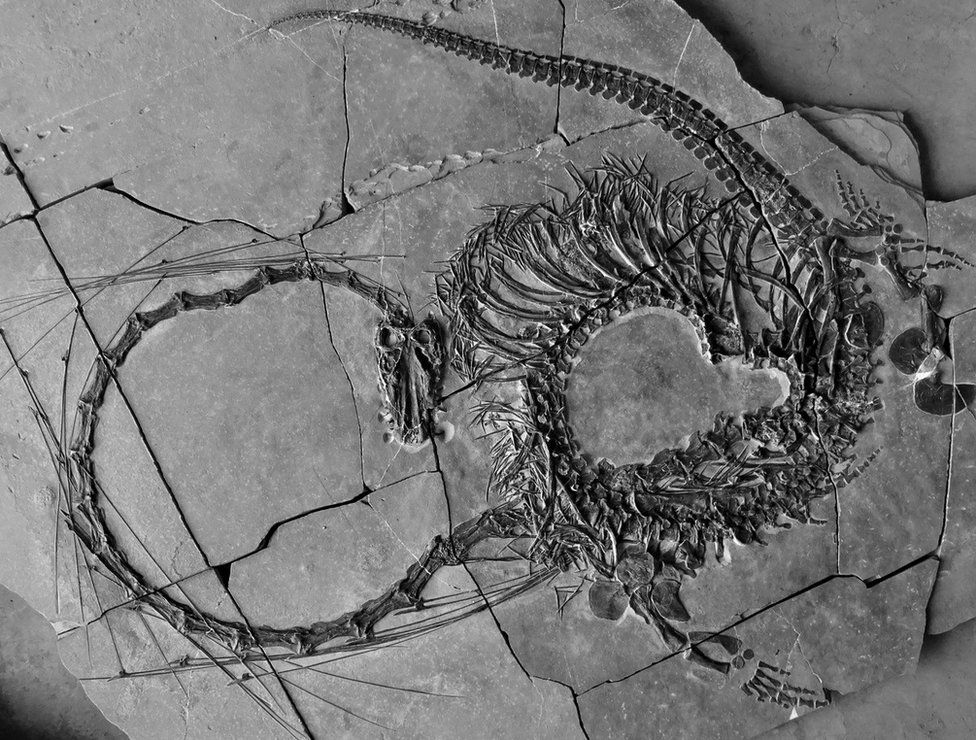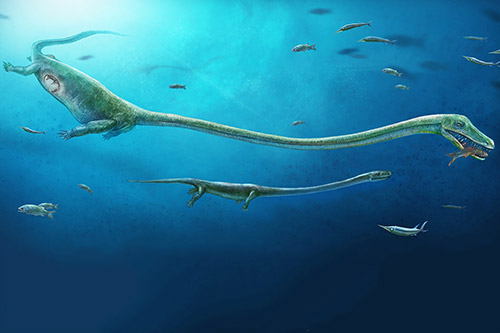Scientists unveil remarkably complete fossil of 240 million year-old ‘dragon’

Scientists have unveiled an extraordinary find, a remarkably well-preserved fossil of a 16-foot (5-meter) long aquatic reptile from the Triassic period, dating back 240 million years.
Dubbed a “dragon” due to its exceptionally long neck, the creature is identified as Dinocephalosaurus orientalis, a species recognized in 2003.
This newfound fossil offers a comprehensive view of the peculiar prehistoric creature’s anatomy, allowing scientists to examine it in its entirety for the first time.
Dr. Nick Fraser, a member of the international research team studying the fossil and associated with National Museums Scotland, expressed the uniqueness of the find, describing it as “a very strange animal” with flipper-like limbs and a neck longer than its body and tail combined.
The 32 separate vertebrae in its “long, bendy, and flexible neck” led researchers to speculate that it may have conferred a hunting advantage, enabling the Dinocephalosaurus orientalis to search for prey in underwater crevices.

The fossil was unearthed in ancient limestone deposits in southern China, contributing to the growing list of peculiar discoveries from the Triassic period.
Dr. Fraser remarked, “This discovery just adds to the weirdness of the Triassic, and every time we look in these deposits, we find something new.”
The findings detailing this set of new fossils are published in the journal Earth and Environmental Science: Transactions of the Royal Society of Edinburgh.
Source-BBC





